In today’s global trade landscape, the transportation of hazardous materials (hazmat) presents unique challenges and complexities, particularly for businesses importing goods from China to Italy. Understanding the intricacies of hazmat freight is essential for ensuring compliance with international regulations, maintaining safety standards, and navigating the numerous hurdles associated with documentation, packaging, and route planning. This article delves into the critical aspects of hazmat freight forwarding, including the definitions and classifications of hazardous materials, the international regulatory frameworks that govern their transportation, the challenges faced by shippers, and the best practices that can facilitate a seamless shipping process. Whether you are new to hazmat shipping or looking to improve your knowledge, this comprehensive guide will equip you with valuable insights to help navigate the intricate world of hazardous materials logistics.
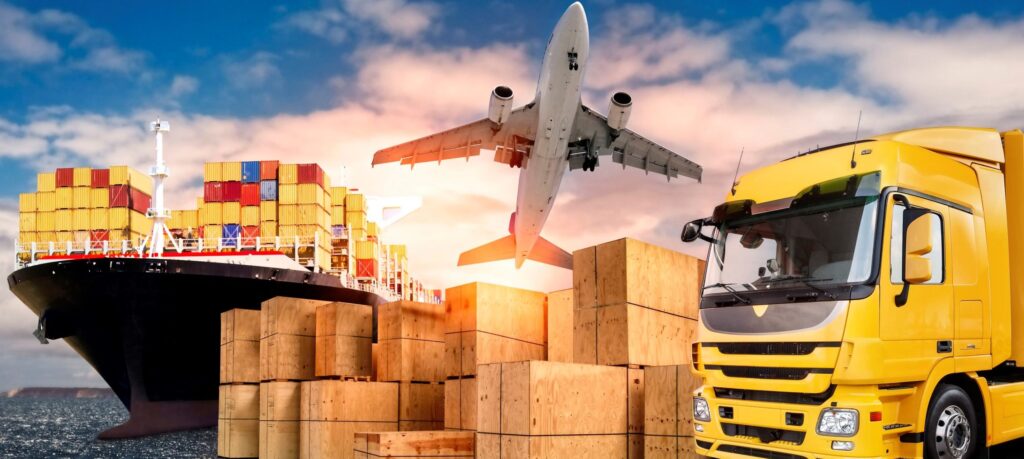
Understanding Hazmat Freight
Hazardous materials, often referred to as hazmat, are substances that pose a significant risk to health, safety, and property when transported in commerce. These materials can be in solid, liquid, or gaseous form and may be capable of causing harm through physical, chemical, or biological properties. The classification of hazardous materials is typically defined by regulatory agencies and includes a range of items such as explosives, flammable liquids, corrosive substances, and toxic agents. Understanding the nuances of hazmat is crucial for businesses involved in importing goods, especially when sourcing from regions like China, which is a significant supplier of hazardous materials.
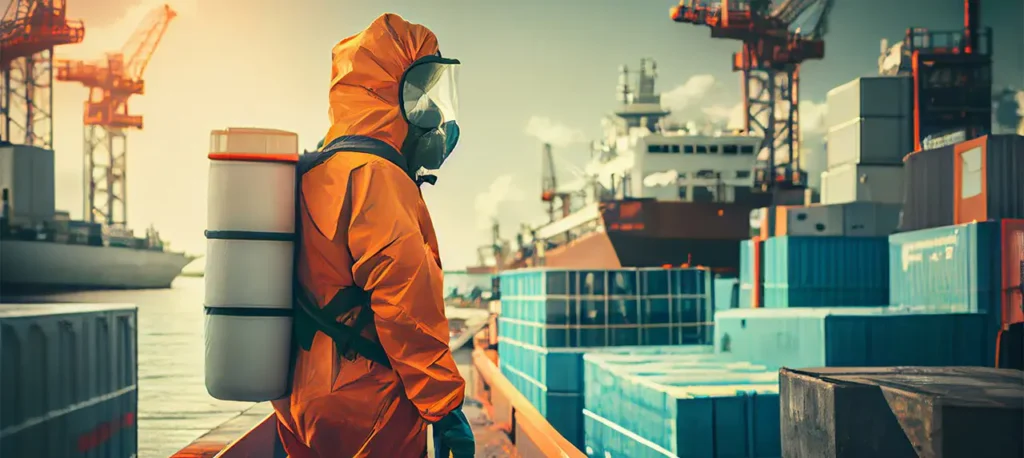
Common Types of Hazmat Goods Shipped from China to Italy
When importing from China to Italy, various hazardous materials are commonly shipped. Examples include:
| Type of Hazmat | Description |
|---|---|
| Chemicals | Industrial chemicals, pesticides, and solvents |
| Flammable liquids | Paint thinners, gasoline, and alcohol |
| Corrosives | Acids, alkalis, and battery acid |
| Toxic substances | Heavy metals, chemicals used in manufacturing |
| Explosives | Fireworks and certain types of industrial explosives |
These goods require special handling and consideration to ensure safety and compliance with regulations throughout the shipping process.
International Regulations Governing Hazmat Transportation
Hazmat transportation is governed by stringent international regulations designed to protect human health and the environment. Key regulatory frameworks include:
- The United Nations (UN) Recommendations on the Transport of Dangerous Goods: These guidelines provide a framework for classifying and packaging hazmat.
- The International Maritime Organization (IMO) Regulations: Specific to sea freight, these regulations ensure safe shipping conditions for hazardous materials.
- The International Air Transport Association (IATA) Dangerous Goods Regulations: Governing air freight, these rules dictate how hazardous goods must be packaged and labeled.
- European Union Regulations: EU regulations further specify the requirements for hazmat transport within member states, including Italy.
Understanding these regulations is crucial for ensuring safe and compliant shipping practices.
Challenges in Hazmat Shipping from China to Italy
Strict Regulatory Compliance
Navigating the regulatory landscape for hazmat shipping is one of the foremost challenges for businesses importing goods from China to Italy. Companies must stay updated on evolving regulations and ensure that their shipping practices adhere to both international standards and local laws. Non-compliance can lead to severe penalties, including fines and shipment delays.
Documentation Requirements
Hazmat shipping entails a complex array of documentation that must be meticulously prepared. Essential documents typically include:
| Document | Purpose |
|---|---|
| Safety Data Sheets (SDS) | Provides detailed information on the hazards and handling of materials |
| Transport Document | Declares the nature of the cargo and compliance with regulations |
| Declaration of Dangerous Goods | Certifies that the shipment complies with all regulations |
Failure to provide accurate and complete documentation can lead to shipment delays, increased costs, and potential legal issues.
Packaging and Labeling Standards
Proper packaging and labeling are critical in hazmat shipping to ensure safety during transport. Packaging must be robust enough to withstand potential impacts and leaks. Hazard symbols and handling instructions must be clearly marked according to regulations. Non-compliance with packaging and labeling standards can result in rejected shipments or fines.
Route Planning and Mode Selection
Selecting the appropriate transport mode and route for hazmat goods involves careful planning. Factors to consider include:
- Safety: Certain routes may pose higher risks (e.g., proximity to populated areas).
- Cost: Different modes (air, sea, land) offer varying costs and times for delivery.
- Regulatory Compliance: Some routes may have specific restrictions on the transport of hazardous materials.
Having a reliable freight forwarder that specializes in hazmat transportation can significantly streamline the shipping process, ensuring compliance and reducing risk.
Partner with Dantful International Logistics
For businesses looking to navigate the complexities of hazmat shipping from China to Italy, partnering with a reliable freight forwarder like Dantful International Logistics can provide invaluable support. With expertise in Customs Clearance, Insurance Services, and tailored Door-to-Door Shipping Services, Dantful can help ensure compliance and efficiency in your supply chain. Their professional team is equipped to handle the unique challenges of hazmat freight, giving you peace of mind as you import goods. Explore the full range of services offered by Dantful and take the first step in securing your logistics needs today.
You may be interested in the following related articles:
- How to Choose the Right Hazmat Freight Forwarder from China to Oman
- The Ultimate Guide to Hazmat Freight Forwarder from China to Morocco
- Navigating Hazmat Freight Forwarding: Your Guide from China to Sri Lanka
- The Ultimate Guide to Hazmat Freight Forwarder from China to Ecuador
- The Ultimate Guide to Hazmat Freight Forwarder from China to Guatemala
- The Ultimate Guide to Choosing a Hazmat Freight Forwarder from China to Nicaragua
Role of Specialized Hazmat Freight Forwarders
Expertise in Hazmat Regulations
Specialized hazmat freight forwarders possess extensive knowledge of international and national regulations governing the transportation of hazardous materials. Their expertise ensures that all shipments comply with the necessary safety standards and legal requirements, minimizing the risk of penalties or delays. They stay updated on changes to regulations from various governing bodies, including the United Nations, the International Maritime Organization, and local authorities, ensuring that all aspects of the shipping process adhere to stringent guidelines.
Risk Assessment and Mitigation
An essential function of specialized freight forwarders is conducting thorough risk assessments for hazmat shipments. They analyze the potential risks associated with the transport of hazardous materials, considering factors such as:
- Material properties: Understanding the chemical and physical characteristics of the goods.
- Shipping conditions: Evaluating environmental conditions during transport (e.g., temperature, humidity).
- Route selection: Identifying potential hazards along transportation routes.
By implementing effective risk mitigation strategies, these forwarders help prevent incidents that could lead to spills, accidents, or regulatory violations, ensuring the safe delivery of goods.
Proper Documentation Handling
Accurate documentation is paramount in hazmat shipping. Specialized freight forwarders ensure that all necessary documents are meticulously prepared, including:
| Document Type | Details |
|---|---|
| Safety Data Sheets (SDS) | Provides essential information on the hazards of materials |
| Dangerous Goods Declaration | Certifies compliance with transport regulations |
| Transport Document | Summarizes shipment details and necessary approvals |
These professionals ensure that all documentation fulfills the legal requirements, facilitating smooth transport and customs clearance.
Coordination with Carriers and Customs Authorities
Effective coordination with carriers and customs authorities is crucial for successful hazmat shipping. Specialized freight forwarders serve as the liaison between various parties involved in the transport process, ensuring that:
- Carriers are informed about the nature of the goods and the specific handling requirements.
- Customs authorities receive the necessary documentation for seamless clearance.
This coordination helps prevent delays and ensures compliance with all regulatory requirements, allowing for timely deliveries.
Advantages of Dantful in Hazmat Freight Forwarding Services
Dantful International Logistics excels in providing hazmat freight forwarding services tailored to meet the unique needs of businesses importing goods from China to Italy. With a knowledgeable team specializing in hazardous materials, Dantful ensures compliance with regulations, conducts thorough risk assessments, and handles all documentation meticulously. Their established relationships with carriers and customs authorities streamline the shipping process, minimizing delays and enhancing safety. By choosing Dantful, businesses can navigate the complexities of hazmat shipping with confidence, backed by a partner committed to providing cost-effective and high-quality service.
Read More:
- Shipping From China To Netherlands
- Shipping From China To Spain
- Shipping From China To Germany
- Shipping From China To France
- Shipping From China to Italy
- Shipping From China To Poland
- Shipping From China to United Kingdom
Key Steps in Hazmat Freight Forwarding Process
Classification and Identification of Hazardous Materials
The first step in the hazmat freight forwarding process involves the classification and identification of hazardous materials. This requires a thorough understanding of the properties of the goods being shipped and their potential risks. Proper classification ensures compliance with regulatory requirements and helps determine the appropriate handling and transport methods.
Selecting Appropriate Packaging and Containment
Once the hazardous materials are classified, choosing the right packaging and containment is critical for safety. Packaging must meet specific regulatory standards to prevent leaks or spills during transport. This may include:
- UN-approved containers: Designed to withstand certain pressures and impacts.
- Cushioning materials: To protect goods from damage during shipping.
Selecting appropriate packaging helps maintain the integrity of the materials and ensures compliance with safety regulations.
Preparing Required Documentation
Preparing the necessary documentation is a vital step in the hazmat shipping process. Accurate and complete documentation facilitates smooth transit and customs clearance. Key documents include:
- Safety Data Sheets (SDS)
- Dangerous Goods Declaration
- Transport Document
Ensuring that all documents are in order reduces the risk of delays and enhances the overall efficiency of the shipping process.
Choosing Suitable Transportation Modes
Choosing the right transportation modes is crucial for the timely and safe delivery of hazardous materials. Options include:
- Air freight: Suitable for urgent shipments but may have stricter regulations.
- Sea freight: Often more cost-effective for larger volumes, but may involve longer transit times.
- Road transport: Ideal for domestic shipments or final legs of delivery.
The choice of transportation mode must align with the nature of the hazmat being shipped and regulatory requirements.
Customs Clearance Procedures
Navigating customs clearance procedures is the final step in the hazmat freight forwarding process. This involves submitting the required documentation to customs authorities and ensuring compliance with all regulations. Having a knowledgeable freight forwarder, like Dantful, can greatly simplify this process, ensuring that all necessary documentation is prepared and submitted accurately, facilitating quick clearance and minimizing potential delays.
Technology in Hazmat Freight Forwarding
Tracking and Monitoring Systems
The integration of tracking and monitoring systems has revolutionized the hazmat freight forwarding process. Advanced technologies such as GPS tracking and IoT devices enable real-time monitoring of hazardous materials throughout their journey. This capability provides shippers with several advantages:
- Real-time visibility: Shippers can track the location of their shipments at any time, ensuring that they stay informed about their cargo’s status.
- Enhanced safety: Continuous monitoring of environmental conditions (temperature, humidity, and pressure) allows for immediate action in case of deviations that could compromise the integrity of hazardous materials.
- Data analytics: Analyzing tracking data can provide insights into shipping patterns and potential risk areas, leading to informed decisions for future shipments.
By leveraging these technologies, businesses can enhance the efficiency and safety of their hazmat shipping operations.
Digital Documentation and E-Filing
The move towards digital documentation and e-filing has expedited the hazmat shipping process significantly. Traditional paper-based systems are being replaced by electronic platforms that streamline the preparation and submission of necessary documentation. Key benefits of this transition include:
- Increased accuracy: E-filing reduces the risk of human error associated with manual entry, ensuring that documentation is complete and correct.
- Faster processing times: Digital submissions can be processed more quickly by customs authorities and freight forwarders, leading to reduced shipping delays.
- Improved accessibility: Digital documents can be easily accessed and shared among stakeholders, enhancing collaboration and communication.
Overall, digital documentation simplifies the complexities involved in hazmat transportation, facilitating compliance and efficiency.
Safety and Environmental Monitoring Systems
Safety and environmental monitoring systems are critical components of hazmat freight forwarding. These systems utilize advanced sensors and technology to monitor various aspects of hazardous material transportation, including:
- Leak detection: Early detection of leaks or spills can prevent environmental contamination and ensure safety.
- Emergency response systems: Automated alerts can notify relevant authorities and stakeholders in case of hazardous incidents, enabling swift action to mitigate risks.
- Environmental impact assessments: Continuous monitoring helps assess the environmental impact of transportation activities, ensuring compliance with environmental regulations.
Implementing these systems enhances safety protocols and fosters a culture of responsibility in handling hazardous materials.
You may be interested in the following related articles:
- Finding the Best Freight Forwarder from China to Sudan
- The Ultimate Guide to Finding the Best Freight Forwarder from China to France
- Ultimate Guide to Sea Freight from China to South Africa: Costs, Routes, and Best Practices
- How to Choose the Best Shipping Agent from China to Canada
- The Ultimate Guide to Hazmat Freight Forwarder from China to Morocco
- Navigating Hazmat Freight Forwarding: Your Guide from China to Sri Lanka
Best Practices for Shippers
Proper Declaration of Goods
One of the foundational best practices for shippers is the proper declaration of goods. Accurately declaring the nature, quantity, and classification of hazardous materials is critical for ensuring compliance with regulations and preventing legal issues. Key steps include:
- Understanding classification guidelines: Familiarize yourself with the relevant hazmat classification systems to ensure accurate declarations.
- Providing detailed information: Include comprehensive details about the materials, such as their UN number, proper shipping name, and hazard class.
- Updating declarations: If there are changes to the shipment, promptly update the declarations to reflect the most current information.
Following these practices minimizes the risk of penalties and enhances the safety of the shipping process.
Adherence to Packaging Guidelines
Adhering to established packaging guidelines is essential when shipping hazardous materials. Proper packaging ensures that goods are protected during transit and helps prevent accidents. Important considerations include:
- Use of approved containers: Ensure that packaging materials are UN-approved for the specific type of hazmat being shipped.
- Labeling requirements: Clearly display hazard symbols and handling instructions on the packaging to inform handlers of potential risks.
- Cushioning and containment: Use appropriate cushioning materials to prevent damage during transport and secondary containment systems to manage leaks or spills.
Strict compliance with packaging guidelines not only enhances safety but also facilitates smoother customs clearance.
Timely Communication with Freight Forwarders
Maintaining timely communication with freight forwarders is vital for effective hazmat transportation. Open lines of communication help ensure that all parties involved in the shipping process are informed and aligned on critical aspects, including:
- Updates on regulations: Freight forwarders can provide valuable insights into any changes in regulations that may affect shipments.
- Status updates: Regular updates on shipment progress can help shippers anticipate potential delays and address any issues proactively.
- Emergency protocols: Establishing clear communication channels for emergencies ensures that appropriate actions can be taken swiftly, minimizing risks.
By fostering strong communication with freight forwarders, shippers can enhance the effectiveness of their hazmat shipping operations.
Incorporating these technological advancements and best practices into hazmat freight forwarding not only improves operational efficiency but also elevates safety standards, providing a solid foundation for successful transportation of hazardous materials. Partnering with a knowledgeable freight forwarder like Dantful International Logistics ensures that these practices are implemented effectively, offering businesses peace of mind as they navigate the complexities of hazmat shipping.
FAQs
1. What are hazardous materials (hazmat)?
Hazardous materials, or hazmat, are substances that pose significant risks to health, safety, and property when transported. They can be in solid, liquid, or gaseous forms, and include items like explosives, flammable liquids, corrosive substances, and toxic agents.
2. What types of hazmat goods are commonly shipped from China to Italy?
Common hazmat goods shipped from China to Italy include:
- Chemicals (industrial chemicals, pesticides)
- Flammable liquids (paint thinners, gasoline)
- Corrosives (acids, alkalis)
- Toxic substances (heavy metals)
- Explosives (fireworks)
3. What regulations govern hazmat transportation?
Hazmat transportation is governed by various international regulations, including:
- UN Recommendations on the Transport of Dangerous Goods
- IMO Regulations for maritime shipping
- IATA Dangerous Goods Regulations for air freight
- EU regulations for compliance within member states like Italy
4. What are the challenges in shipping hazmat from China to Italy?
Challenges include:
- Strict regulatory compliance: Adhering to evolving regulations can be complex.
- Documentation requirements: Numerous documents must be prepared accurately.
- Packaging and labeling standards: Proper packaging is essential to ensure safety.
- Route planning and mode selection: Choosing the right transport method is critical for safety and compliance.
5. Why should I use a specialized hazmat freight forwarder?
Specialized hazmat freight forwarders offer expertise in regulations, risk assessment, documentation handling, and coordination with carriers and customs authorities, minimizing the risk of delays or penalties.
6. What key steps are involved in the hazmat freight forwarding process?
The key steps include:
- Classification and identification of hazardous materials
- Selecting appropriate packaging and containment
- Preparing required documentation
- Choosing suitable transportation modes
- Navigating customs clearance procedures

Young Chiu is a seasoned logistics expert with over 15 years of experience in international freight forwarding and supply chain management. As CEO of Dantful International Logistics, Young is dedicated to providing valuable insights and practical advice to businesses navigating the complexities of global shipping.


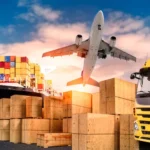
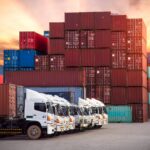
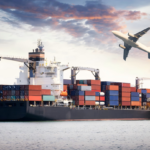

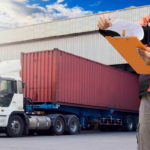


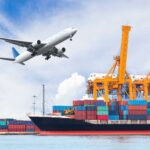
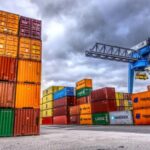
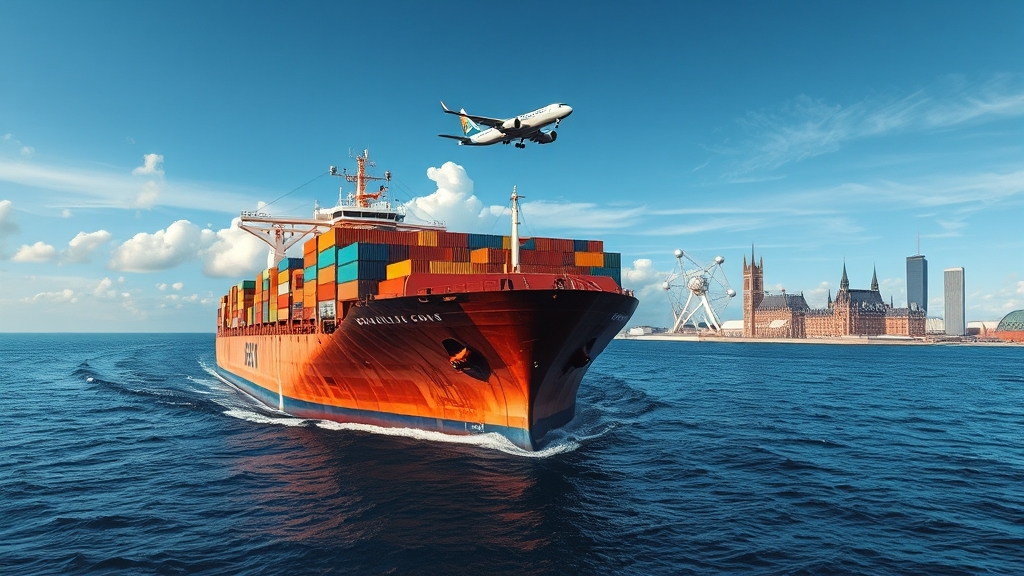
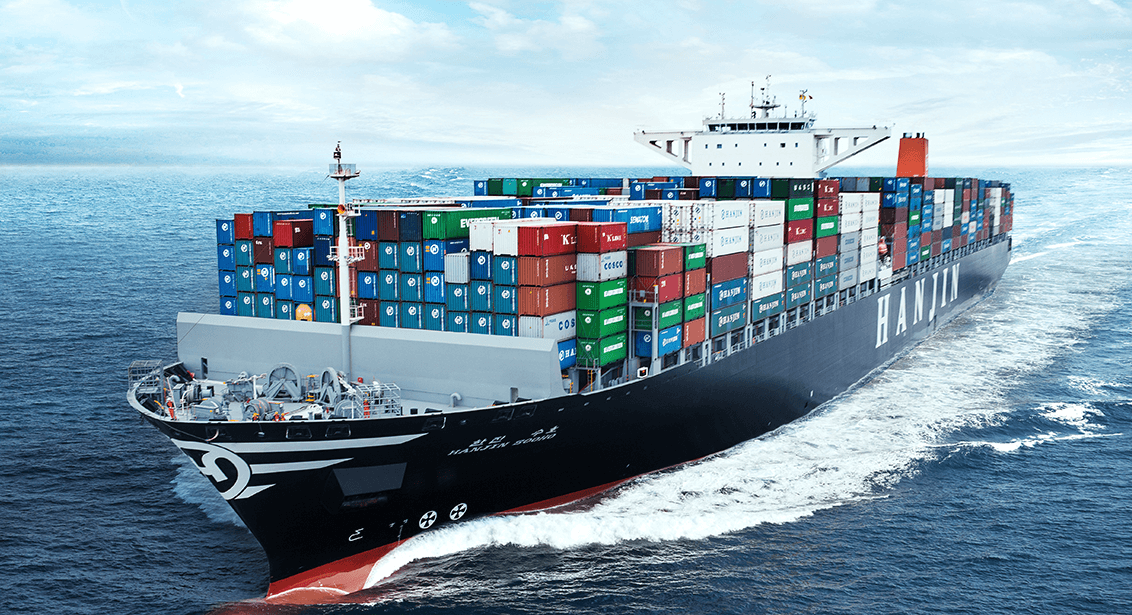
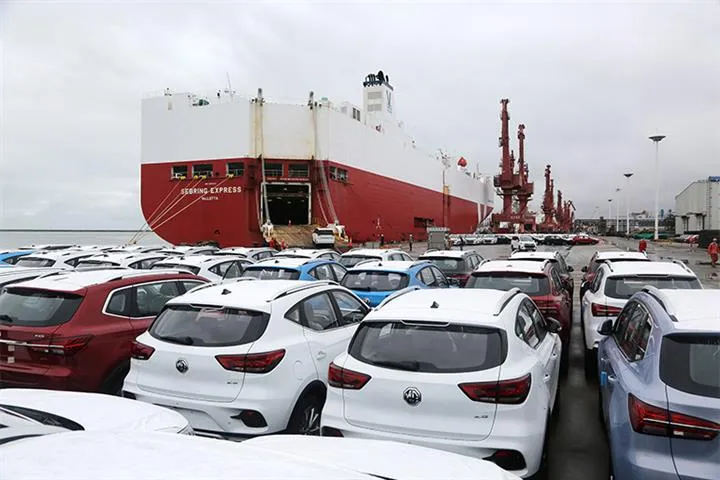

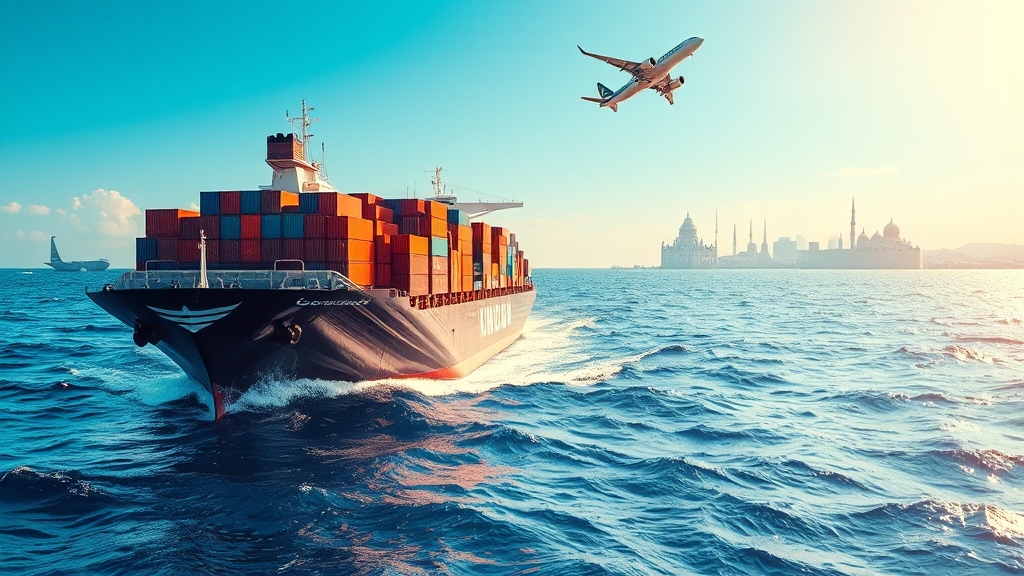





 Afrikaans
Afrikaans Shqip
Shqip አማርኛ
አማርኛ العربية
العربية Հայերեն
Հայերեն Azərbaycan dili
Azərbaycan dili Euskara
Euskara Беларуская мова
Беларуская мова বাংলা
বাংলা Bosanski
Bosanski Български
Български Català
Català Cebuano
Cebuano Chichewa
Chichewa 简体中文
简体中文 繁體中文
繁體中文 Corsu
Corsu Hrvatski
Hrvatski Čeština
Čeština Dansk
Dansk Nederlands
Nederlands English
English Esperanto
Esperanto Eesti
Eesti Filipino
Filipino Suomi
Suomi Français
Français Galego
Galego ქართული
ქართული Deutsch
Deutsch Ελληνικά
Ελληνικά Kreyol ayisyen
Kreyol ayisyen Harshen Hausa
Harshen Hausa Ōlelo Hawaiʻi
Ōlelo Hawaiʻi עִבְרִית
עִבְרִית हिन्दी
हिन्दी Hmong
Hmong Magyar
Magyar Íslenska
Íslenska Igbo
Igbo Bahasa Indonesia
Bahasa Indonesia Gaeilge
Gaeilge Italiano
Italiano 日本語
日本語 Basa Jawa
Basa Jawa ಕನ್ನಡ
ಕನ್ನಡ Қазақ тілі
Қазақ тілі ភាសាខ្មែរ
ភាសាខ្មែរ 한국어
한국어 كوردی
كوردی Кыргызча
Кыргызча ພາສາລາວ
ພາສາລາວ Latin
Latin Latviešu valoda
Latviešu valoda Lietuvių kalba
Lietuvių kalba Lëtzebuergesch
Lëtzebuergesch Македонски јазик
Македонски јазик Malagasy
Malagasy Bahasa Melayu
Bahasa Melayu മലയാളം
മലയാളം Maltese
Maltese Te Reo Māori
Te Reo Māori मराठी
मराठी Монгол
Монгол ဗမာစာ
ဗမာစာ नेपाली
नेपाली Norsk bokmål
Norsk bokmål پښتو
پښتو فارسی
فارسی Polski
Polski Português
Português ਪੰਜਾਬੀ
ਪੰਜਾਬੀ Română
Română Русский
Русский Samoan
Samoan Gàidhlig
Gàidhlig Српски језик
Српски језик Sesotho
Sesotho Shona
Shona سنڌي
سنڌي සිංහල
සිංහල Slovenčina
Slovenčina Slovenščina
Slovenščina Afsoomaali
Afsoomaali Español
Español Basa Sunda
Basa Sunda Kiswahili
Kiswahili Svenska
Svenska Тоҷикӣ
Тоҷикӣ தமிழ்
தமிழ் తెలుగు
తెలుగు ไทย
ไทย Türkçe
Türkçe Українська
Українська اردو
اردو O‘zbekcha
O‘zbekcha Tiếng Việt
Tiếng Việt Cymraeg
Cymraeg יידיש
יידיש Yorùbá
Yorùbá Zulu
Zulu